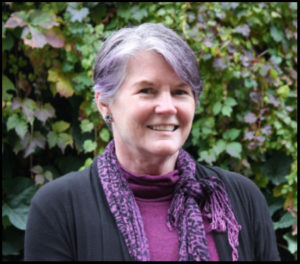Jan 10, 2023

Many homebuyers today are losing sleep over steeply rising interest rates, which have more or less doubled over the past year and reached their highest level in two decades. Now hovering in the mid-6 % range, these higher rates are adding hundreds, or even thousands, to the monthly housing costs of new buyers.
Yet buyers who feel trapped into paying high interest should know that there is a way to lower that rate with a mortgage rate buy-down.
True to its name, a mortgage rate buy-down is where money is paid upfront to “buy down” the interest rate on the loan for a certain period of time. This, in turn, can reduce the buyer’s monthly mortgage payments—at least temporarily—so the buyer can ease into the housing costs.
Best of all? Buyers don’t pay for buy-downs. Rather, home sellers, builders, and sometimes even lenders front the costs in order to entice cash-strapped buyers to the closing table.
While homebuyers might be happy to hear that there’s a free end run around high rates, they might also wonder: Is there a catch? To help, here’s a guide to mortgage rate buy-downs, the pros and cons, and how to decide if getting one is right for you.
Why the mortgage rate buy-down is popular today
The rate buy-down was once popular during the high-interest-rate era of the 1970s, so it’s understandable that it’s resurged in popularity today. While this clearly seems like a win for buyers, sellers and builders who can’t find a buyer can benefit as well, since offering to pay for a buy-down can help them close the deal.
“With increasing interest rates, sellers will likely be looking for great ways to incentivize buyers, and this product would be a great way to do that,” says Adam Fuller, a senior loan officer at Mortgage 1 in Grand Rapids, MI.
Even lenders—many of whom are scrambling for business these days—might offer to buy down their own interest rate simply in an effort to nab a borrower’s business, as is the case with Rocket’s Inflation Buster buy-down.
Homebuyers who aren’t offered a buy-down can always ask their seller, builder, or lender if they’re open to this option. Not everyone will be, but it never hurts to ask.
How a mortgage rate buy-down works
In a nutshell, a buy-down offers a homebuyer lower monthly mortgage payments for a set period of time, typically one to three years. After that point, the interest rate returns to the original higher rate.
A buy-down comes in various forms in order to suit a borrower’s circumstances. Here are some of the most common ones out there today.
Types of buy-down loans
2-1 buy-down
A 2-1 buy-down means that during the first year of your mortgage, the interest rate you’ll pay will be 2% below market. In the second year, it will be 1% lower.
Here’s the gist of how that plays out with a 30-year fixed mortgage on a $300,000 house, with a 5% down payment and 7% interest rate.
In Year 1, the interest rate is 5% and the monthly mortgage payment is $1,529.94. The yearly savings is $4,394.05
In Year 2, the interest rate is 6% and the monthly mortgage payment is $1,708.72. The yearly savings is $2,248.72.
In Years 3–30, the interest rate is 7% and the monthly mortgage payment is $1,896.11.
The total savings over the entire loan term is $6,642.77.
3-2-1 buydown
This buy-down temporarily lowers the borrower’s interest rate for the first three years. As the name implies, the interest rate is reduced by 3% in the first year, 2% the second year, and 1% the third year. The payment reverts to the original note for the remaining 27 years (or as seen below, Years 4–30).
Here’s how it unfolds when you buy a $300,000 house with a 5% down payment and an interest rate of 7% for a 30-year fixed mortgage.
In Year 1, the interest rate is 4% and the monthly mortgage payment is $1,360.63. The yearly savings is $6,425.74.
In Year 2, the interest rate is 5% and the monthly mortgage payment is $1,529.94. The yearly savings is $4,394.05.
In Year 3, the interest rate is 6% and the monthly mortgage payment is $1,708.72. The yearly savings is $2,248.72.
In Years 4–30, the interest rate is 7% and the monthly mortgage payment is $1,896.11.
The total savings over the life of the loan is $13,068.51.
How much does a mortgage rate buy-down cost?
Since a mortgage rate buy-down is essentially pre-paid interest, the fee for the buy-down (paid for by the seller, builder, or lender) will be equal to the amount saved in interest.
So in the above scenario for a 3-2-1 buy-down, which would save the buyer $13,068.51 in interest, this is the fee the seller (or builder or lender) would pay upfront. This sum is then placed in an escrow account that then helps supplement the buyer’s monthly mortgage payments over the length of the buy-down.
While buy-downs might seem like a bum deal for sellers or builders, it’s often better than not being able to sell a property at all. (It’s also better for a lender to land the loan than lose that customer.) While a seller or builder could also reduce the price of the property, some might prefer to keep their sales price high and foot the bill of the buy-down instead. So in this sense, a buy-down can benefit the buyer, seller, and lender by drumming up deals they might not get otherwise.
Pros and cons of a mortgage rate buy-down for buyers
The mortgage rate buy-down benefits buyers today in that they can slowly ratchet up to making higher monthly payments and save money during the lower interest term.
“The main risk of a buy-down is that you’ll grow accustomed to spending the money you’re saving, and you’ll end up having trouble making your monthly payments when you eventually need to pay the full interest rate,” says Holden Lewis, a home and mortgage expert at NerdWallet.
That being said, lenders qualify borrowers according to their ability to pay back the loan using the highest interest rate. Still, make sure that the mortgage is one you can truly afford for the long term; lenders can help you crunch the numbers and make sure the loan is comfortably within your means.
It’s also worth checking all the terms, fees, and savings to make sure the math truly adds up to make this a bargain.
“Is the full interest rate competitive with other lenders? If it is, well, sometimes a good deal is simply a good deal and there are no gotchas,” says Lewis. “If the interest rate isn’t competitive, it may be worth considering other options.”
Buy-down vs. ARM: Which is better?
Homebuyers contemplating a buy-down might wonder how it compares with other loans that offer a temporary break on interest, like an adjustable-rate mortgage, or ARM. While an ARM does offer a lower rate for a certain period of time (typically five years), after that point, the rate could shoot up each year, making it an unpredictable risk that many might want to avoid.
A rate buy-down, in contrast, allows borrowers to still get a fixed-rate mortgage so they’ll know what their payments will be for 30 years. While an ARM might make sense for homebuyers who know they’ll move before the rate adjusts, those who plan to stay put beyond that might prefer the predictability of a buy-down instead.
“These programs give you stability of having a 30-year fixed payment while having the short-term lower rate benefit [similar to] an adjusted rate mortgage,” says Nicole Rueth, senior vice president at The Rueth Team in Denver.
Source- https://www.realtor.com/advice/finance/how-to-lower-mortgage-interest-rate-buy-down/






